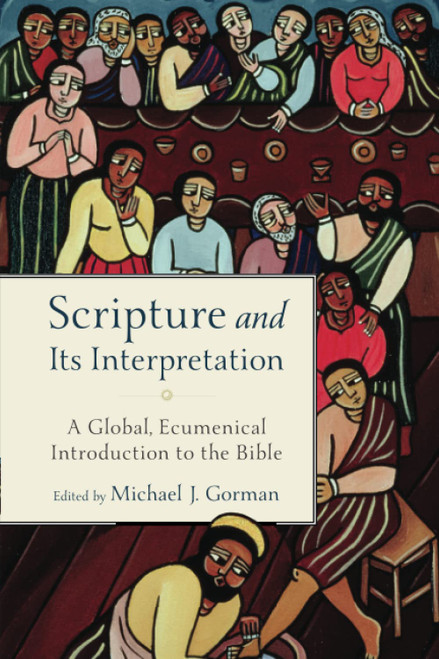This book is about interpreting between people who do not share the same language. The two primary audiences are expected to be students of interpreting, and working interpreters, both novice and experienced. The book is not designed in the way that one might expect an introductory textbook to be designed. An introductory textbook generally includes study questions or suggested assignments at the end of each chapter. Perhaps it will be better to consider this book as a reference manual. While reading this bookor any other single book for that matterwill not turn an interested and hardworking student into an interpreter, it can offer a framework for understanding the field of interpreting. Interpreting requires both a base of knowledge and a body of experience. This book is designed to begin to provide that base of knowledge Instructors in interpreter education programs will find it necessary to supplement the reading here: observations of working interpreters, practical exercises to simulate the complex array of tasks an interpreter takes on, additional reading, and discussions of accepted practice in the locale where the interpreters will be working. Nor does this book pretend to have all of the answers to the working interpreters questions; it can only attempt to put those questions in perspective. Working interpreters will benefit from discussing questions raised in this book with colleagues and co-workers inside interpreting and in related fields. And, while we have not said it yet, we anticipate the largest audience to be interpreters who translate between hearing and deaf people, sign language interpreters. This volumes goals are more modest than other publications for sign language interpreters, in that it focuses specifically on interpreters or those studying to become interpreters. The relationships with clients (both deaf and hearing) of interpretation services will be dealt with in several sections, but from the perspective of the interpreter. Insofar as interpreters are the ones who educate the public about interpreting, much of the material will be relevant to tasks beyond the immediate work situation, including client relations, working conditions, logistics, and advocacy for interpreting. Only the final chapter on Practical Considerations is written toward the audience of non-interpreters, those hiring or preparing to accommodate interpreters and mixed groups of hearing and hearing-impaired people. At the same time, this volume is more ambitious than previous ones, since it makes general statements about interpreters and interpretation wherever possible. Sign language interpreters are becoming more aware of similarities between themselves and spoken language interpreters. While twenty years ago the goals of interpreting with deaf people related to certain circumscribed spheres of action, such as rehabilitation, medical and legal emergencies, and the occasional phone call, nowadays changes in public laws and public attitudes have increased the integration of deaf citizens into the worlds of business and professional life, recreation and arts, education and all aspects of social service. The increased opportunities for deaf people have expanded the dimensions of the interpreters work as well. This book, then, attempts to identify the parallels between spoken language interpretation and interpretation with deaf people (whether presented in signed or other visual forms). We will be reminded of differences which cannot be ignored, as well. NOTE: This book is identical content to the 1990 revised edition - however, because of re-printing, the book itself has been slightly reformatted, which results in different page numbering from the previous edition.
Interpreting: An Introduction
Brand: Registry of Interpreters for the Deaf, Inc.
MSRP:
Was:
Now:
$19.05 - $42.43
(You save
)
(No reviews yet)
Write a Review

Write a Review

Brand: Registry of Interpreters for the Deaf, Inc.
Interpreting: An Introduction
- SKU:
- UPC:
- 9780916883072
- Maximum Purchase:
- 3 units
- Binding:
- Paperback
- Publication Date:
- 2015-10-05
- Author:
- Nancy Frishberg
- Language:
- english
- Edition:
- Revised

So You Want to Be an Interpreter: An Introduction to Sign Language Interpreting
MSRP:
Was:
Now:
$12.44 - $83.07

Brand: Kendall Hunt Publishing
Communicating Literature: An Introduction to Oral Interpretation
MSRP:
Was:
Now:
$34.98 - $300.00

Zondervan Academic
Introduction to Biblical Interpretation: Third Edition
MSRP:
Was:
Now:
$34.33 - $43.17

Brand: Aspen Publishers
An Introduction To Statutory Interpretation and the Legislative Process (Introduction to Law Series)
MSRP:
Was:
Now:
$22.74 - $181.53

HarperCollins Christian Pub.
Introduction to Biblical Interpretation, Revised and Updated Edition
MSRP:
Was:
Now:
$18.69 - $51.55

Andreas J K stenberger Richard Patterson
For the Love of God's Word: An Introduction to Biblical Interpretation
MSRP:
Was:
Now:
$23.89 - $46.85

InterVarsity Press
The Hermeneutical Spiral: A Comprehensive Introduction to Biblical Interpretation
MSRP:
Was:
Now:
$33.62 - $89.56

Baker Academic
Scripture and Its Interpretation: A Global, Ecumenical Introduction to the Bible
MSRP:
Was:
Now:
$22.34 - $41.44

Introduction To 12-Lead ECG: The Art Of Interpretation (Garcia, Introduction to 12-Lead ECG)
MSRP:
Was:
Now:
$93.72 - $117.78
!
